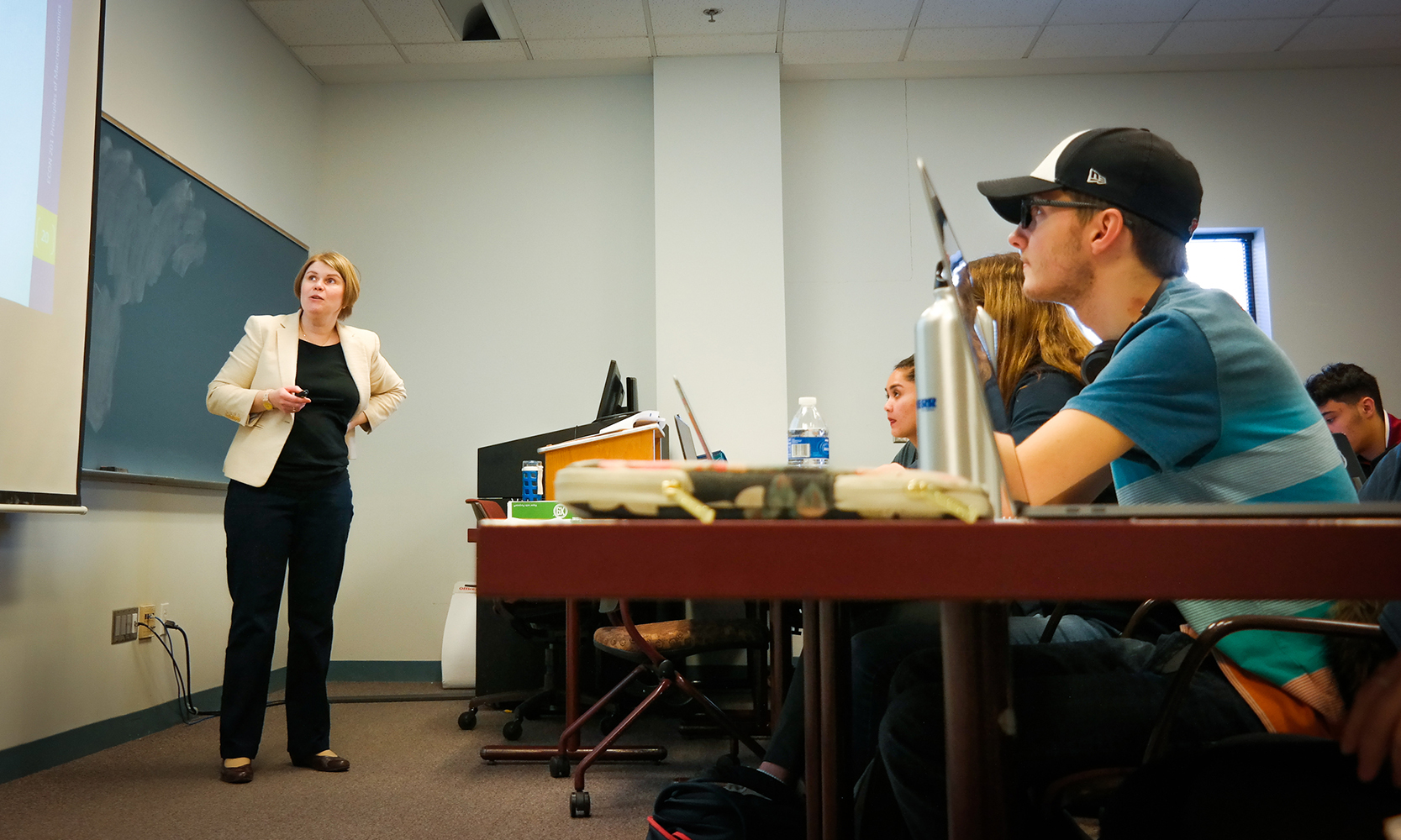
Getting through college in the typical four years is hardly typical anymore. On average, it will take a student at an American university five years to earn an undergraduate degree. At UM-Dearborn—where many students also juggle family or work responsibilities—only about one in five hit that four-year benchmark. And studies consistently show that can have a big impact on a student’s finances: Every semester of additional study costs thousands of dollars; and each year spent in the classroom is one not spent in the workforce earning the higher wage that generally accompanies a college degree.
To help more students get on a faster track, the university is now investing in several new initiatives—including an innovative program designed to help students tackle the tough core courses they will encounter early in their education.
“There are certain ‘gateway’ courses, where if a student struggles early on, it can stop them from moving on,” said Gail Luera, an associate professor of science education who’s helping manage the Gateways to Completion program. “For example, a lot of our students who want to be engineers have to start with a pre-calculus course. And if they don’t do well at the get-go—even if they pass—they’re going to have a hard time once they get to calculus.”
Luera and her colleagues on a faculty committee identified three such gateway courses— macroeconomics, intro psychology, and pre-calculus—where the number of students withdrawing, taking an incomplete, or earning a D or F was particularly high. Then, with help from instructional designers at The Hub for Teaching and Learning Resources, the group set to work revamping the courses to see if they could improve student outcomes.
For example, Associate Professor Natalia Czap’s Principles of Macroeconomics course looks a lot different today than it did a few years ago. Back then, she followed a traditional lecture-discussion model and mostly relied on quizzes and exams for evaluating students’ learning. After a course redesign, she broke her lecture into more digestible 10- to 15-minute segments—following each with an exercise, which students completed on their laptops.
“Then the system gives instant personalized feedback to the student and to me so we can see if they understand the material,” Czap said. “And if I see that a lot of students struggled with something, then I immediately know to go over it again.”
Czap said the new course design also de-emphasizes something neither she nor her students were particularly fond of: big exams.
Under the new model, students earn credit for participating in each of these classroom exercises, logging the most points for completing an exercise correctly on the first attempt, and fewer points for getting it after a few tries. Students thus earn their grades more slowly, over time, with many small opportunities rather than with just two or three make-or-break exams.
“There are many students who have what it takes, but they need several attempts to get there,” Czap said. “If you’re only giving them one chance to do well on an assignment, without a chance to resubmit after your feedback, then many are going to be left behind.”
Now in her fourth semester of teaching the revamped course, Czap said the biggest benefit is going to students in the middle: More students are earning As and Bs, and the average GPA has increased from 2.7 to 3.0. Associate Professor Caleb Siefert is seeing similar trends in his retooled psychology course, where the number of A, A- and B grades has risen by about 5 percent. Lecturer Mark Radosevich, who also is tackling a course redesign for his pre-calculus course, is still tracking his results.
Luera is hoping that hard evidence will help generate interest in classroom reforms among other faculty, though she notes many instructors won’t need much convincing.
“We have faculty who are doing innovative things in their classes all on their own,” Luera said. “It’s definitely part of the culture here. We’re a ‘teacher-scholar’ university. That’s part of our mission. And it’s exciting to see so many faculty taking the first part of that mission so seriously.”





